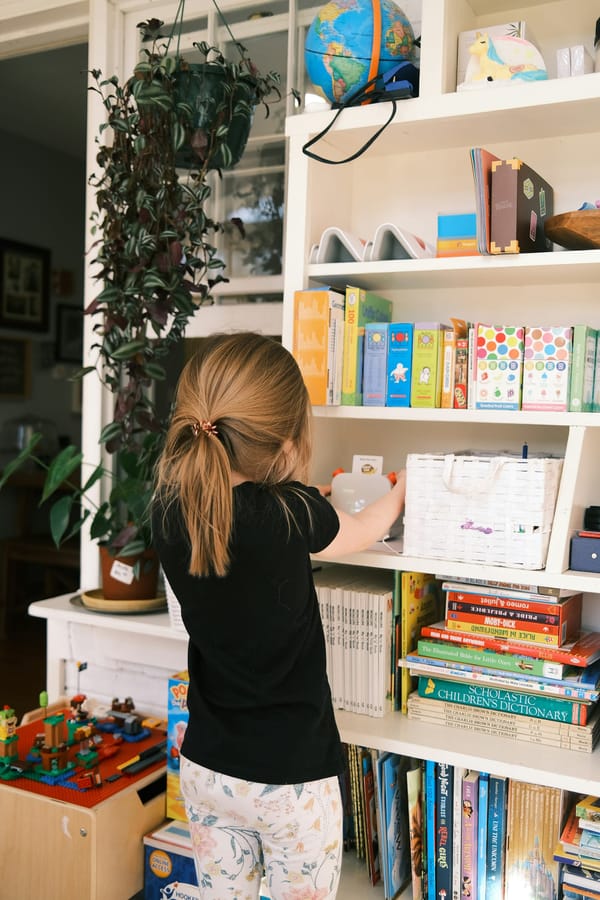Creative Homeschooling: How to Incorporate Art Into Your Homeschool Routine

As homeschooling parents, we strive to give our children the best education possible, often focusing on core subjects like math, reading, and science. But what about art? Art is not just a fun activity that fills up your day – it’s a valuable tool for enhancing creativity, critical thinking, and problem-solving skills. Incorporating art into your homeschool routine can be simple, fun, and effective for your child’s overall development. In this post, we’ll explore practical tips, creative project ideas, and ways to weave art into your homeschool curriculum by grade level.
The Importance of Art in Homeschooling

Before diving into the “how,” let’s take a moment to reflect on the “why.” Art provides a wide range of benefits for homeschoolers:
1. Promotes Creativity: Art encourages kids to think outside the box and explore different methods of self-expression.
2. Boosts Emotional Intelligence: Drawing, painting, and crafting help children process their emotions, understand themselves better, and communicate what they’re feeling.
3. Improves Fine Motor Skills: Whether it’s coloring, cutting, or sculpting, art activities help improve hand-eye coordination and fine motor control.
4. Enhances Critical Thinking: Art allows children to make decisions, solve problems, and learn from mistakes in a low-pressure environment.
5. Encourages Cultural Awareness: Through exposure to various art forms from around the world, children can gain insights into different cultures and historical periods.
6. Fosters Self-Esteem: Completing an art project gives children a sense of accomplishment and boosts their confidence.
How to Incorporate Art in Your Homeschool Routine

Integrating art into your homeschool day doesn’t have to be complicated or time-consuming. Here are a few strategies to make art a consistent part of your learning:
1. Make It Part of Daily Life: Keep art supplies readily available, and encourage your children to create whenever inspiration strikes. You can even make it a part of your morning routine or wrap up the day with an art project.
2. Integrate Art with Other Subjects: Art doesn’t have to be a standalone subject. You can combine it with subjects like history, science, or literature to make lessons more engaging. For example, after studying ancient Egypt, have your child create a drawing or sculpture of the pyramids.
3. Use Art as a Form of Expression: Give your children the freedom to express their emotions and ideas through art. This can be particularly helpful when discussing difficult topics or encouraging them to reflect on their learning.
4. Keep Art Projects Simple: You don’t need to spend a lot of time on art to see its benefits. Short, simple activities like sketching, drawing, or crafting can make a big difference.
Art Ideas for Homeschooling by Grade Level
Every grade level presents unique opportunities to explore art in a way that complements your child’s cognitive and emotional development. Below are age-appropriate art ideas to incorporate into your homeschool routine.

Preschool (Ages 3-5): Fostering Creativity through Play
At this stage, the goal is to introduce your child to basic artistic concepts and give them plenty of opportunities for free expression.
• Finger Painting: Young children love to get their hands messy! Finger painting is a sensory experience that allows them to explore colors and textures.
• Coloring and Drawing: Encourage your child to color in coloring books or free draw. Simple shapes and patterns help develop fine motor skills.
• Collage Making: Gather magazines, scrap paper, and other materials for your preschooler to cut and paste into creative collages.
• Texture Exploration: Introduce textures such as fabric, sandpaper, or leaves into their artwork. This helps them engage with the world around them in a tactile way.

Elementary (Grades K-5): Expanding Techniques and Introducing Art History
At this stage, children begin to develop specific skills and techniques, and their interest in different types of art starts to grow.
• Watercolor Painting: Watercolor painting is a great way for elementary students to experiment with color blending and brush techniques.
• Sculpture: Use clay, playdough, or even recyclable materials to create simple sculptures. This helps kids improve their spatial awareness and understanding of shapes.
• Art History: Introduce children to famous artists like Van Gogh, Picasso, and Monet. Have them recreate a famous piece of artwork or experiment with the artist’s style.
• Nature Art: Take your art lessons outdoors. Let kids gather leaves, flowers, and other natural materials to create beautiful nature-based artwork.
• Printmaking: Experiment with basic printmaking techniques, such as stamping or using everyday objects (like potatoes or sponges) to create prints.
Middle School (Grades 6-8): Refining Techniques and Exploring Media

As children enter middle school, their skills become more refined, and they are ready for more challenging and detailed art projects.
• Acrylic Painting: Middle school students can explore different painting techniques with acrylics. This helps them understand the properties of different paints and how to blend colors.
• Drawing and Shading: Teach the basics of perspective, shading, and light to help them develop their drawing skills.
• Digital Art: If you have access to a computer or tablet, introduce your child to digital art tools like drawing software. This could include basic graphic design or digital painting.
• Mixed Media Art: Encourage students to combine different materials – such as fabric, paper, and paint – to create mixed-media art projects that push their creativity.
• Portraiture: Teach students how to draw human figures or portraits. This project can include techniques in measuring proportions and focusing on details like eyes, noses, and lips.

High School (Grades 9-12): Mastering Art Forms and Developing a Personal Style
In high school, students can begin focusing on mastering specific art forms while also exploring their own artistic style.
• Advanced Painting Techniques: Teach your child more advanced techniques in oil or watercolor painting, including layering, texture, and depth.
• Charcoal Drawing: Introduce high school students to more intricate drawing techniques like charcoal, which adds depth and dimension to artwork.
• Art Portfolio: High schoolers can start developing an art portfolio, showcasing their best work over the years. This is also useful for students considering pursuing art in college or professionally.
• Photography: Photography can be a great way for teens to explore art. Experiment with different settings, light conditions, and photography techniques.
• Art Critique: Have your teen research different art movements (Impressionism, Surrealism, etc.) and critique famous works based on technique, meaning, and impact.
• Create Personal Art Projects: Encourage high schoolers to explore their interests and create art that speaks to them. Whether it’s fashion design, graphic design, or creating digital illustrations, allow them the freedom to experiment.
Tips for Making Art Fun and Effective
• Be Flexible: Some children may love art and spend hours on it, while others may get frustrated. Let them work at their own pace and embrace the process rather than focusing on the outcome.
• Create an Art-Friendly Space: Dedicate a specific area in your homeschool for art projects. Keep it well-stocked with supplies like paints, markers, paper, scissors, and glue. Make sure the space is comfortable and easy to clean up!
• Use Online Resources: There are tons of free or low-cost art tutorials available online. Websites like YouTube, Skillshare, or Pinterest offer step-by-step instructions on various art techniques.
• Incorporate Art into Field Trips: Visit museums, art galleries, or local art studios for inspiration. A field trip to see artwork in person can be incredibly inspiring for kids.
• Host an Art Show: Celebrate your child’s art by hosting an art show at the end of each term. This could be a simple display at home or even a virtual show for friends and family.

Conclusion
Art is an essential part of a well-rounded homeschool education. It fosters creativity, critical thinking, and emotional growth, all while helping children explore the world in new ways. Whether your child is in preschool or high school, there are countless ways to incorporate art into your homeschool routine. By using these tips and ideas, you can create an art-friendly environment that encourages creativity and helps your children develop new skills in a fun, engaging way.
Remember, there’s no “right” way to teach art – the most important thing is to let your child’s creativity flourish, providing them with the tools and opportunities to express themselves. Happy homeschooling!
Are you already incorporating art into your homeschool? We’d love to hear about the strategies that have worked for you! Connect with us on our Facebook page!
If you found these ideas helpful, be sure to share this post with other homeschooling families who might benefit from a little creative inspiration.


